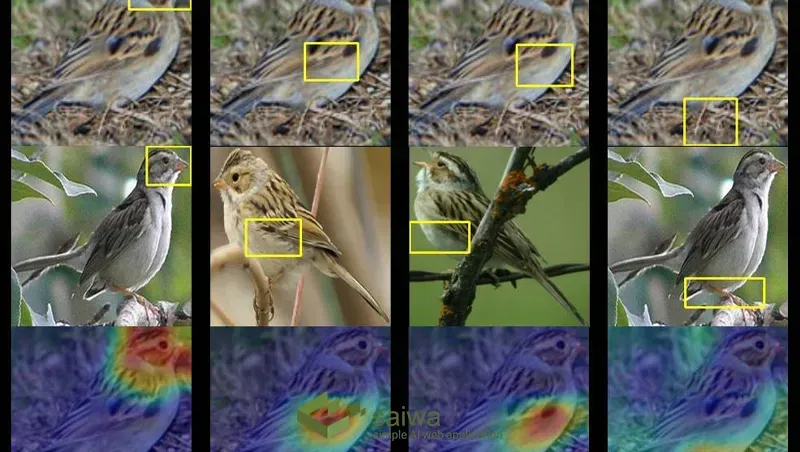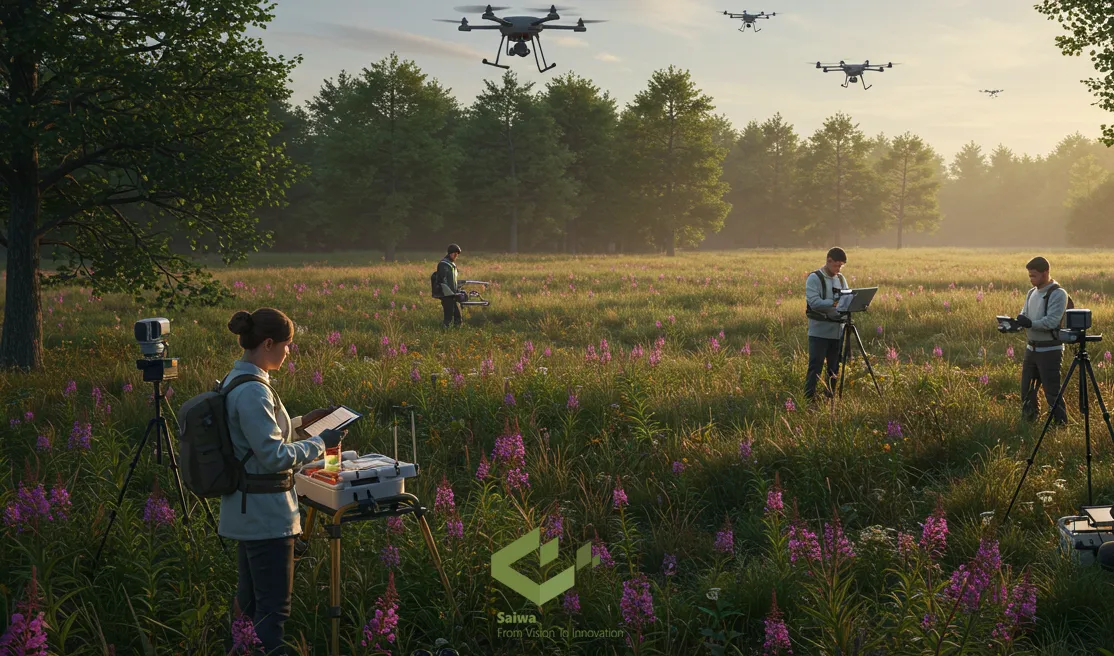Critical Role of Invasive Species Monitoring and Management

Invasive species pose significant environmental and economic threats through ecosystem disruption, loss of biodiversity, and damage to agriculture, infrastructure, and local industries. Effective management of invasive species requires comprehensive monitoring to track their spread, guide interventions, and assess impacts. This blog post explores key invasive species monitoring approaches, technologies, predictive modeling applications, and stakeholder coordination needs for strategic invasive species management. We also discuss the growing role of artificial intelligence and machine learning in enabling the next generation of autonomous monitoring systems. Timely, comprehensive monitoring combined with rapid response is the foundation for successful invasive risk mitigation.
Read Also: The impact of machine learning in agriculture
What is species detection?
In the study of biology, ecology, or environmental science, various species are identified and categorized through the process of species identification. Utilizing various techniques and technologies, the process of identifying species entails identifying and categorizing living things according to their various traits, such as morphology, genetic markers, or behavior.
In ecology, species identification is crucial for tracking biodiversity, comprehending ecosystem dynamics, and evaluating the effects of changing environmental conditions. To identify species, scientists and researchers employ sophisticated computational techniques, remote sensing technologies, DNA analysis, field surveys, and more.
Some of the common techniques used in species identification include:
Field observations: Scientists conduct field observations to observe and document the presence of different species in a certain area. This may include visual identification, listening to animal calls, or collecting samples for further analysis.
DNA Barcoding: This process involves sequencing a short and standard region of an organism's DNA to identify and differentiate between species. This method is very useful when traditional identification based on morphology is challenging.
Camera Traps: Automatic cameras equipped with motion sensors are installed in natural habitats to capture images or videos of wildlife. It is a non-invasive way and can report very important data about the behavior of different species.
Acoustic Monitoring: Recording and analyzing the sounds produced by animals can help a lot in the process of species identification, especially for nocturnal species. This method is common in the study of birds, bats, and amphibians.
Remote Sensing: Satellite images and technologies related to remote sensing can be used to monitor changes in vegetation, land cover, or environmental conditions that may indicate the presence of certain species.
species detection AI and machine learning: These two cutting-edge computing techniques can be used to analyze massive data sets and spot patterns linked to various species. As part of this process, models that have been trained on data from recognized species may be used to forecast which species will be present in the new data set.

Monitoring Methods and Technologies
Invasive species surveillance leverages a spectrum of methods:
Field surveys on the ground provide direct but localized species counts, habitat characterization, and specimen collection for identification. Trained teams scout priority zones.
Satellite platforms like DigitalGlobe enable regional-scale landscape monitoring to map invasive plant cover and track broad trends. High revisit rates aid change detection.
Drones augment ground surveys with efficient aerial monitoring of topography and habitats not easily accessible on foot. Multispectral sensors quantify plant vigor and health over time.
Environmental DNA sampling detects traces of skin, fur, and feces in water and soil enabling highly sensitive species detection. This determines occurrence and distribution.
Traps, lures, and bait stations help attract and capture invasive specimens for identification and population studies. Marker pheromones and attractants improve efficiency.
Telemetry tagging of captured invasives reveals detailed movement patterns and home ranges to identify habitat factors and spread dynamics.
Read Also: AI-Based Drone Operation| AI in Drones use cases
Rapid Response and Control
Tight integration of invasive species monitoring and control activities enables agile, adaptive management of invasives:
Pre and post-treatment monitoring is critical for comprehensively assessing the efficacy of control interventions like biological agents, pesticides, mechanical removal, or habitat manipulation. This quantification of outcomes informs the optimization of techniques. Intelligent optimization models can guide timing, location selection, and resource allocation for control activities based on continually updated surveillance data to maximize effectiveness. Having continual streams of sensor data along with frequent resurveys provides rapid feedback to help adaptively adjust interventions in near real-time as invasive distributions shift. This allows for managing dynamic, evolving landscapes.

Role of AI and Machine Learning in Invasive Species Monitoring
Emerging technologies will facilitate increased automation of invasive species monitoring and analytics:
Machine learning models like deep neural networks can automate the analysis and classification of incoming imagery, sensor data, and sound streams to identify and quantify invasive species reliably. This will massively scale up monitoring reach. Advanced computer vision techniques enable automated detection, counting, and geotagging of individual invasive animals and plants from drone and camera trap footage using object recognition and scene understanding algorithms. Smart algorithms powered by techniques like reinforcement learning allow the integration of diverse multi-modal data layers like imagery, weather, transportation activity, and crowdsourced reports to uncover subtle correlations and patterns difficult for human analysts to discern. These richer insights improve predictions of spread trajectories and establishment hotspots. Intelligent control systems can interface predictive models directly with sensors and drone swarms to enable autonomous, real-time survey planning, treatment deployment, and follow-up monitoring.
Read Also: Practical Application & Future of AI in Agriculture
Monitoring in Terrestrial Ecosystems
Monitoring in Terrestrial Ecosystems categorize into different branches.
The Landscape of Terrestrial Monitoring
Monitoring invasive species in terrestrial ecosystems involves assessing the presence and impact of intruders on land. The process is equally critical, as terrestrial environments are home to a multitude of native species, including plants, insects, and mammals. Early detection and effective monitoring are essential for preserving the integrity of these ecosystems.
Camera Traps and Sensor Networks
Camera traps and sensor networks are revolutionizing terrestrial monitoring. Camera traps, equipped with motion sensors and infrared technology, can capture images and videos of wildlife and potential invasive species in their habitats. These devices are essential for understanding animal behavior and detecting elusive invaders like feral hogs and invasive carnivores.
Sensor networks, on the other hand, employ various sensors to gather data on environmental parameters and the movement of species. Soil moisture sensors, for instance, can detect changes in soil conditions due to invasive plant growth. These networks provide real-time data for researchers, aiding in the early detection of invasive species.
Challenges and Limitations
However, with all the benefits that invasive species monitoring can provide, some issues remain around:
Pervasive data gaps in both space and time. Vast areas lack monitoring with sparse sampling.
Difficulty in comprehensively modeling complex ecology, human behaviors, transportation networks, and climate effects driving invasions.
Labor and resource constraints limit the feasibility of comprehensive manual surveys, especially in remote terrain.
Technical challenges operating monitoring instruments like drones and traps under harsh weather and terrain.
Jurisdictional coordination since invasives freely cross management boundaries.

Stakeholder Collaboration
Inclusive collaboration and engagement improve invasive species monitoring and control outcomes:
Engaging land managers such as farmers, foresters, and ranchers as partners in co-developing monitoring programs ensures that they are tailored to local needs and priorities and improves buy-in and information sharing. Citizen science initiatives, which utilize public volunteers to identify and submit reports and images of invasive species in a cost-effective manner, expand monitoring coverage. This also increases community engagement with the problem. Fostering interagency and transboundary coordination enables necessary regional-scale monitoring, analysis, and control strategies as invasive species freely cross geopolitical boundaries. Pursuing equitable partnerships with indigenous communities respects and combines their deep intergenerational traditional ecological knowledge with modern AI and robotics. Promoting public education to minimize accidental human-assisted spread of invasives through channels such as recreation, cargo transport, livestock, and corridors. Collaborative monitoring and prevention involving all stakeholders is most effective.
Remote Sensing and GIS
Satellite remote sensing supports large-scale invasive species mapping and tracking:
Multi-spectral and hyper-spectral satellite sensors facilitate detecting invasive plants based on unique reflectance signatures compared to native vegetation. This enables regional scale landscape monitoring.
High revisit cycle satellites allow frequent multi-temporal analysis to identify anomalous vegetation changes indicative of new invasive colonization and spread. Planet Labs provides daily global coverage.
Satellite image analysis with GIS allows mapping habitat suitability highlighting areas vulnerable to invasions based on indicators like ecoregion data and land disturbance patterns to focus early detection efforts.
Combining satellite observation data with on-the-ground sensor recordings and surveys as training data inputs to machine learning models allows hybrid approaches balancing wide coverage with local precision.
Overall, remote sensing provides invaluable data for scalable modeling, but local context plays an equally important role in providing the necessary ground-truthing to properly train, apply, and act on predictive models.
The Future of Invasive Species Management
The future of invasive species management is promising. Advances in monitoring techniques, including the integration of technology, remote sensing, and citizen science, offer new and powerful tools for early detection and response. Collaboration among scientists, agencies, and communities is key to preserving our natural environments and protecting the biodiversity that sustains our world.
Conclusion
Continuous monitoring paired with rapid response is critical to mitigating invasive threats but requires the blended adoption of new technologies and increased collaboration. Looking ahead, AI and automation will transform invasive species monitoring, while communities and land managers remain essential for field validation, complementary knowledge, and implementation support. Wisely combined, advanced intelligence and ecological knowledge offer the most promising path to turning the tide against harmful invasive species.
Note: Some visuals on this blog post were generated using AI tools.
